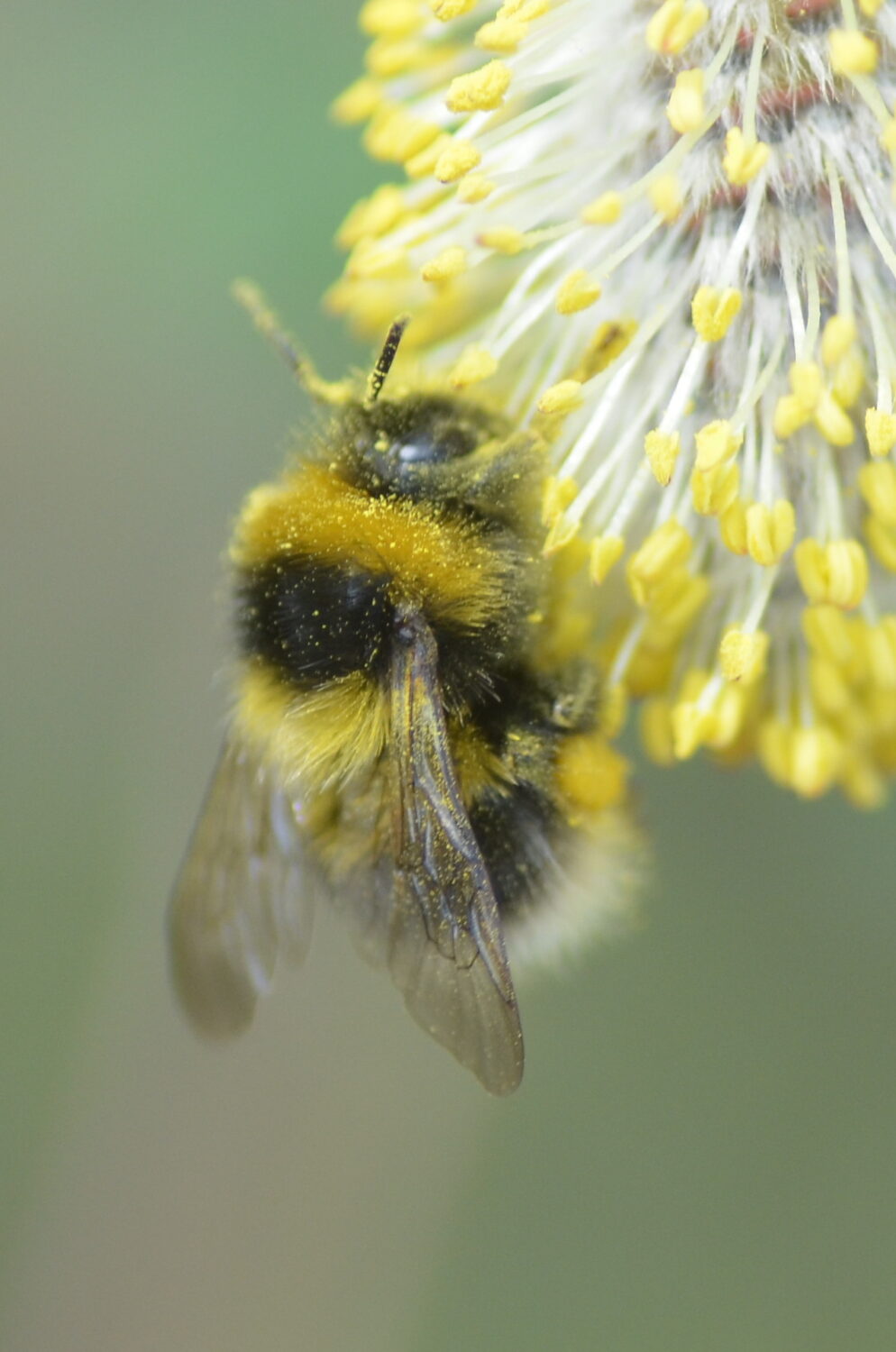Explore and identify common white-tailed bumblebees in a helpful blog by NHSN Conservation Officer, Charlotte Rankin.
A black-and-yellow striped bumblebee paired with a white tail is the iconic image of a bumblebee. Your ‘White-tailed bumblebee’ can in fact be one of several species of bumblebee with a white-tail. This post will cover how to identify the most common white-tailed bumblebees in the North East. While they can appear similar, these species can be identified by taking a closer look at key features such as the banding and hair colour. These bumblebees can be seen on the wing from spring through to the end of summer, with the emergence of males and new queens marking the end of nests.
White-tailed Bumblebee Bombus lucorum agg.
White-tailed Bumblebees nest underground and are often found in old rodent burrows. Nests can contain over 200 workers. The White-tailed Bumblebee is actually a group of three species that can only be separated confidently by DNA! However, this aggregation can still be recorded as “Bombus lucorum sensu lato”.
Queens have a clean-white tail, a lemon-yellow collar behind the head and a lemon band on the abdomen. It is never tawny or off-white like that of queen Buff-tailed Bumblebees. The colour of the bands are lemony yellow rather than the darker rusty-yellow of Buff-tailed Bumblebees. Workers resemble smaller versions of the queens. Despite the name, workers of Buff-tailed bumblebees have white tails and so are difficult to separate from worker White-tailed Bumblebees.
Out later in summer, the males are often extensively yellow with a white tail. Males also have distinctive yellow-haired faces and a tuft of yellow hair on top of the head. Like all male bumblebees, males lack the shiny pollen baskets of females on the back legs.
Garden Bumblebee Bombus hortorum
The Garden Bumblebee may choose to nest underground or amongst dense vegetation. Nests tend to be quite small and generally produce less than 100 workers. This bumblebee can be confused with the White-tailed Bumblebee but two key features help to identify this species; the face and yellow banding.
Unlike White-tailed Bumblebees, this bumblebee has an extra yellow band on the thorax which essentially forms a double midriff band; one band at the bottom of the thorax and one at the top of the abdomen.
The face is also noticeably longer than other bumblebees and is often described as ‘horse-shaped’. Accompanying this long face is a very long tongue, the longest of any bumblebee species. This means you will likely find this bumblebee visiting tubular flowers such as foxgloves and clovers.
Queens, workers and males look similar. Workers resemble smaller version of the queens. Out later in summer, males have longer antennae and often a yellow tuft of head on top of their head. Like all male bumblebees, males lack the shiny pollen baskets of females on the back legs.
The Garden Bumblebee is a target species of the North East Bee Hunt. Find out more about the ecology and identification of this bumblebee here.
Heath Bumblebee Bombus jonellus
The Heath Bumblebee nests underground or amongst dense vegetation. Nests generally produce no more than 50 workers.
This is not as common as the other featured white-tailed species but can be confused with the Garden Bumblebee due to its double middle band and white tail. The key feature to look out for is the short face and tongue unlike that of Garden Bumblebees. The queens are also smaller than those of Garden Bumblebees. Workers resemble small queens.
Males have yellow-haired faces and longer, curved antennae. This yellow-haired face also contrasts with the black-haired faces of male Garden Bumblebees.
The Bumblebee Conservation Trust have a handy comparison between the faces of Heath and Garden Bumblebees.
Tree Bumblebee Bombus hypnorum
Favouring aerial-nesting sites, you may find the Tree Bumblebee nesting in your garden bird boxes or roof eaves.
While the Tree Bumblebee has a white tail, it is easily distinguished from other white-tailed species by its lack of yellow bands. Instead, it has a brown-haired thorax and black-haired abdomen. Workers resemble small queens. Out later in summer, males have longer antennae, a ginger tuft on their head and often have brown hair extending onto their abdomen.
The Garden Bumblebee is a target species of the North East Bee Hunt. Find out more about the ecology and identification of this bumblebee here.
What if my white-tailed bumblebee doesn’t fit these descriptions?
If your white-tailed bumblebee has darker wings and sparser hair, you likely have a species of cuckoo bumblebee. Like the cuckoo bird, these bumblebees take over the nests of other species. As females do not collect pollen, they lack shiny pollen baskets and have hairy hind legs. These bees are not as common as their hosts and can be trickier to identify, but The Bumblebee Conservation Trust have a handy online guide.

Take part in the North East Bee Hunt
Urban or rural, beginner or expert, we need your help to record eight distinctive bees across the North East this spring and summer.
Your records can add to our understanding of bees in the region and inform conservation and monitoring efforts.
Taking part is easy and every record counts, wherever you live in the region. Records of all bee species are encouraged.









